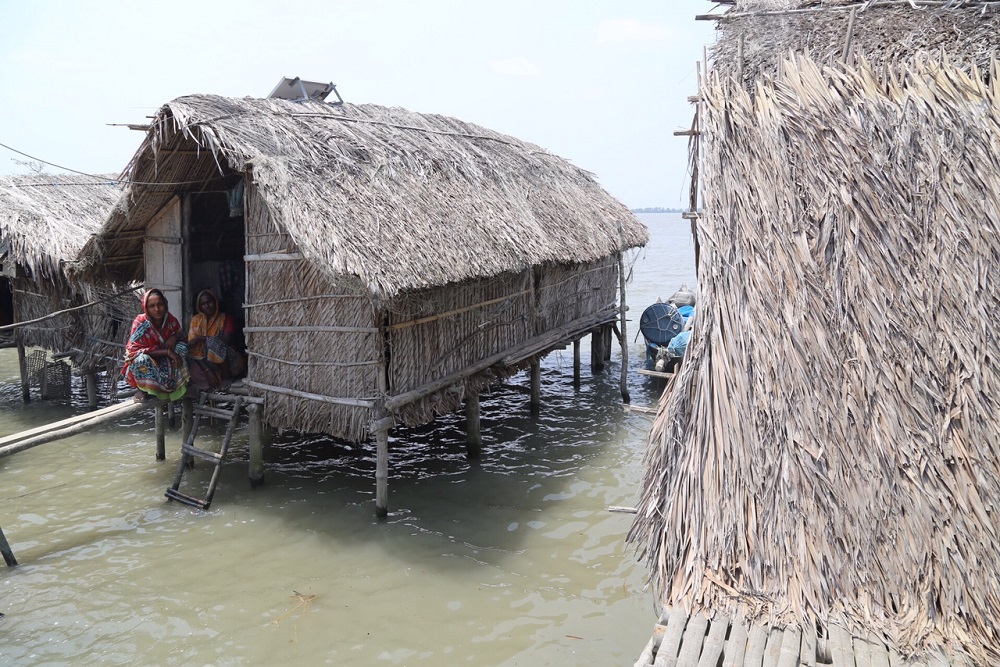Statement by Prof. Walter Kaelin, Envoy of the Chair of the Platform on Disaster Displacement on the occasion of the Climate Vulnerable Forum on Climate Change and the Migration & Displacement Nexus
22 February 2022
Excellencies, Ladies and Gentlemen,
Let me start by thanking the organizers for this event, which provides a great opportunity for us to contribute to the important work of the Climate Vulnerable Forum (CVF). Let me also thank the Government of Bangladesh as Chair of the CVF and Steering Group member of the Platform on Disaster Displacement (PDD).
In light of the limited time, I would like to focus on just one question submitted to us in the excellent concept note for this event: How can we achieve an international governance framework for the protection of those displaced or compelled to migrate in the context of climate change and its adverse effects? While I will not be able to fully answer this question, I would like to contribute some very preliminary elements.
We need to first identify those elements of global governance that are already in place. Here, we already face an obstacle. Displacement and migration is a cross-cutting issue that is dealt with by several policy processes and international frameworks which focus on different dimensions of human mobility in the context of adverse effects of climate change.
Prevention is not only an issue of climate change adaptation addressed within the UNFCCC processes but also a topic of disaster risk reduction addressed by the Sendai Framework, the national Disaster Risk Reduction (DRR) strategies based on it, and the Global Platform for DRR as its follow-up mechanism. The seventh session of the Global Platform (GP22) in Bali will devote a whole session to our issue. Arguably, whatever one does on prevention, should also be embedded within and aligned with the 2030 Agenda for Sustainable Developmental and its Sustainable Development Goals (SDGs).
Internal displacement and forced migration in affected countries is an issue that is not only addressed under the UNFCCC Warsaw Mechanism on Loss and Damage, but also a human rights and humanitarian challenge and thus an issue for the Human Rights Council and its mechanisms, as well as for various forums and processes related to humanitarian systems. It is also addressed in the Secretary-General’s Agenda for Action on Internal Displacement, which is currently being developed as a follow-up to the report of the High-Level Panel on Internal Displacement.
Cross-border displacement and migration as a coping mechanism concern both loss and damage and climate change adaptation, but such movements are also addressed by the Global Compact for Migration (GCM) and its International Migration Review Forum (IMRF), and to a lesser extent the Global Compact on Refugees (GCR). This year’s IMRF will amongst other things discuss progress made on implementing the GCM commitments to address environmental drivers of migration, and enhance pathways for safe, orderly and regular migration including for people compelled to migrate in the context of disasters and adverse effects of climate change. The Regional Consultative Processes on migration (RCPs) can also play an important role.
All of this means that it is hardly possible to develop a global governance framework that is located in only one of these policy processes. Nevertheless, there is much we can do to strengthen governance at domestic, regional and global levels.
Important elements of domestic governance frameworks include sound normative frameworks such as DRR and climate change adaptation strategies that incorporate displacement risks and the challenges of human mobility, or laws and policies on internal displacement or planned relocation such as those adopted by Fiji and Vanuatu, and institutional frameworks that bring together all relevant actors and allow for better coordination and a whole-of government approach. States should also honour commitments under the GCM and address human mobility in their migration laws, including with tools such as humanitarian visas, temporary protection, or quotas for people from affected countries.
At regional levels, it is possible to further pursue efforts to harmonize the approaches of countries to admit and protect cross-border displaced persons as was done in the Americas with the development and adoption of regional guidelines on admission and stay. The development of regional human mobility frameworks such as the one presently discussed in the South Pacific region, or the explicit inclusion of people migrating in the context of sudden- or slow-onset disasters in regional agreements on free movement of persons, as was recently done by the Intergovernmental Authority on Development (IGAD) in the Horn of Africa, offer huge potential in some parts of the world.
Finally, at the global level, we have to not only pursue our work within the various and relevant policy processes and frameworks, but more importantly, enhance policy coherence across policy silos. This requires that interested and affected countries engage in a more coherent way in all relevant fora and processes. It also requires more, and more concrete, work on practical solutions to provide the necessary technical support, capacity-building and financial resources to particularly and adversely affected countries. There is also a need to improve strategic coordination at the highest level in the UN system to bring together the different areas of work of UN agencies and organisations in a more holistic way.





